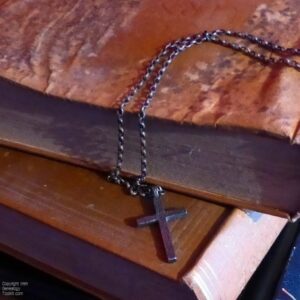For pre-1864 family history research, Irish church records will likely be your go-to resource. However, for births, marriages, and deaths occurring after 1864 it may be beneficial to examine Ireland’s civil registration system instead.
To research your Irish church records, two essential pieces of information will be necessary: your ancestor’s religion and where (town or village) they lived. Parish registers were traditionally collected locally and remain accessible today on an individual level.
Where are the major national collections located?

While efforts have been undertaken in recent years to convert these local collections into searchable online databases like RootsIreland.com and IrishGenealogy.ie, not all churches or heritage centres have been willing to contribute their collections.
With one notable exception (see below) – the National Library of Ireland’s large collection of Irish Roman Catholic records dating up to 1882 (see below) – Ancestry, FindMyPast and MyHeritage are still relatively lacking in Irish church records collections.
As for that exception…The National Library’s unindexed database of images from Roman Catholic parish registers can be found freely online at nli.registers.ie. In 2016, Ancestry and FindMyPast joined forces to produce an index to these images that they made freely available; Ancestry included it within their paid-for collection while FindMyPast decided to make it freely accessible; MyHeritage does not currently maintain such an index for these images.
Do the Records Exist? A second problem could arise, and this one can be particularly distressing, if parish registers no longer exist for where your ancestors lived.
Emlafad and Kilmorgan in County Sligo has Church of Ireland records for baptism, marriage and burial dating back to 1762.
Excellent news for Protestants looking to trace their family from near Ballymote!
But if your ancestors from that region were Roman Catholics, things may not go so well for you. Catholic baptism and marriage records for this district began being kept beginning in 1824; 1824-1856 index baptism records can only be accessed locally for a fee; while no burial records exist.
Things could be much worse! In Achonry parish, no registers of either faith predating civil registration exist.
Therefore, 1864 should serve as the starting point for birth and death records if you wish to trace your family tree in and around Tubbercurry.
Catholic marriages (with civil records for non-Catholic unions spanning back to 1845).
Naturally, this severely limits the depth of your ancestral research.
Unfortunately, you have nothing much you can do except accept this reality and hope that by some miracle a copy of your local parish registers may one day turn up intact and legible.
Where Should You Begin
In order to trace your family tree using Irish church records, it is necessary to know where their ancestors lived. This knowledge can then be applied when searching the Church records in Ireland.
Knowing your parish is vital.
Your county may only offer limited assistance.
If you have not identified the locality yet, the first step should be identifying an exact place of origin – ideally a townland but any civil parish will do just as well.
Make sure you understand how Irish parishes and land divisions may impact on your search (see Quick Links below for further guidance.).
What was your ancestor’s religion? Do you know?
Most researchers should be able to make an educated guess based on more recent relatives’ beliefs; however, always remain prepared for unexpected results.
As I researched my Irish ancestry, I found mostly Catholic relatives on every branch and twig of my tree; yet I was thrilled to discover one Methodist: George Nichols was born in Dublin in 1844 – something which left me truly stunned!
He had married and brought up six children as Roman Catholics, yet claimed Methodist beliefs on both census forms of 1901 and 1911.
No wonder I hadn’t found his Catholic baptism record where I should have!